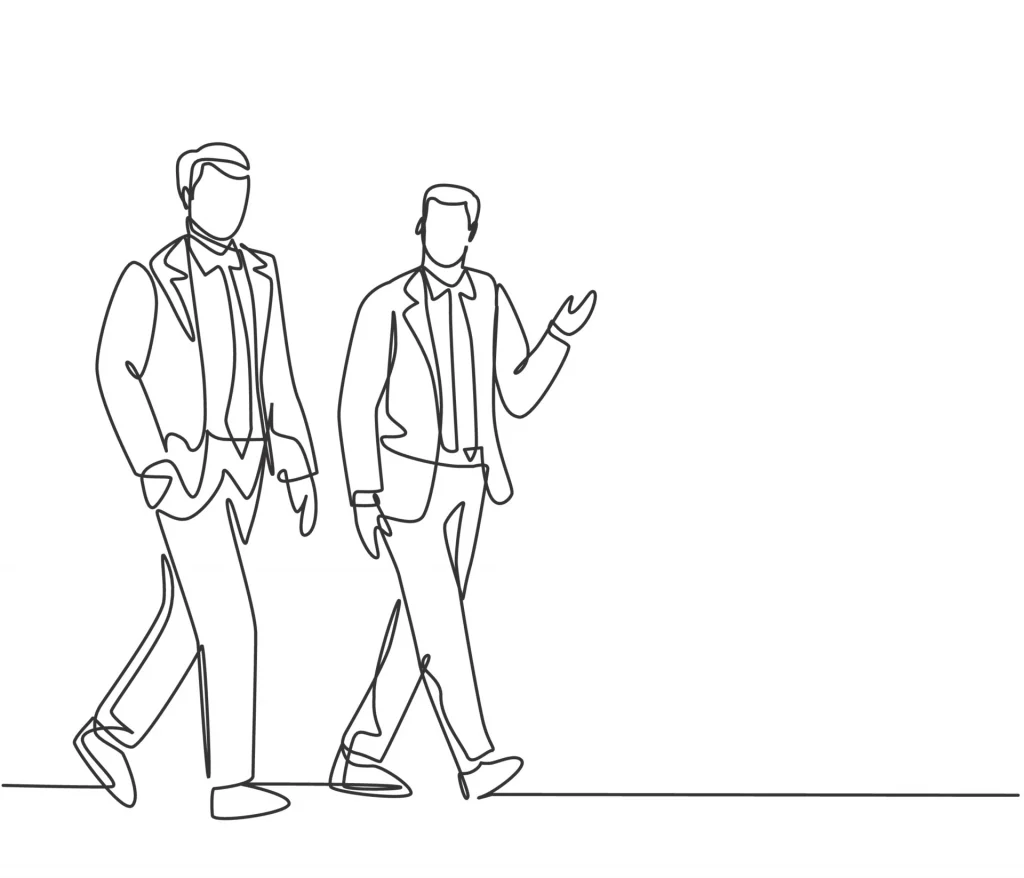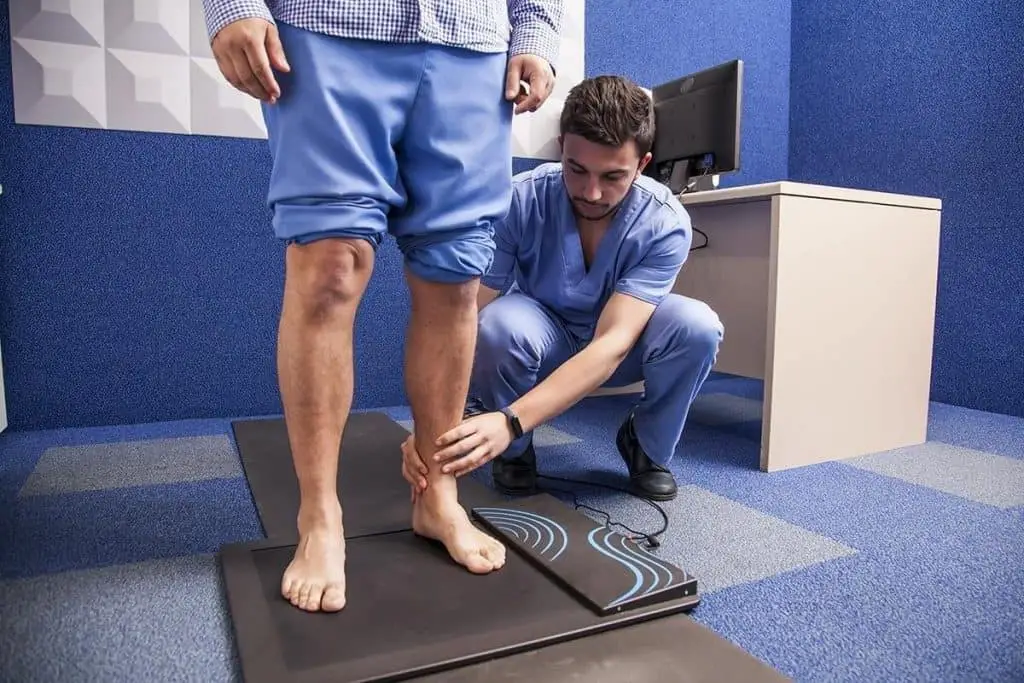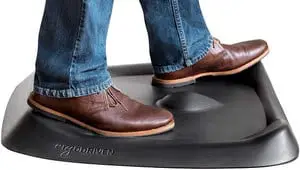Walking is one of the most underrated and simplest forms of activity. It allows us to move forward and get to where we want to be. It is also one of the most important aspects when talking about lifestyle ergonomics.
However, the majority of the population is doing this without proper form for walking. Doing so may take a toll on your body in the future.
Everything from your posture, arm motion, feet motion, and walking stride are very important to help you walk with energy while making sure that you can maximize the benefits of walking regularly.
In this article, we will show you the proper walking form to help you avoid shoulder, back, and hip pain. You can use this technique to walk anywhere, whether you are at the mall or on the treadmill. Let’s learn together to help you move forward!
At Office Solution Pro, we are passionate about Ergonomics! Our readers support the page. If you click on a link, we may earn a small commission at no cost to you. We hope you love the products we recommend as much as we do!
Why Should You Walk More?
In our current day and age, we are living a new sedentary lifestyle. It is defined as a type of lifestyle where an individual does not receive regular amounts of physical activity.
It is estimated that most people starting in their twenties have less activity level than ever before. Some of the negative effects of physical inactivity include:
- A decrease in skeletal muscle mass
- Higher risk of obesity
- Elevated blood pressure and higher cholesterol levels
- Higher risk of cardiovascular diseases
- Contributes to anxiety and depression
You probably are aware that regular exercise is the key to combating this issue. Regular stretches and exercises keep you healthy, help you lose weight, and, yes — it can help you live longer with a better quality of life.
Most health professionals are also in agreement that walking 10,000 steps a day (approximately 5 miles) is the ideal goal to set for improving health and reducing health risks caused by inactivity.

While most conventional wisdom suggests that performing aerobic exercise and maintaining a healthy diet will offset the effects of time spent being sedentary, exercising for 30 minutes a day may not be enough to counteract the effects caused by lack of activity throughout your day.
The solution is to perform less sitting and more moving overall.
Walking is a low-impact workout that anyone can do, anywhere. If you are walking at the mall, great! If you are walking in the park, awesome! It is the basic foundation to promote movement in your life.
However, there is little information on how to walk properly. If somehow you are misaligned and imbalanced, your joints may become stiff. If you don’t walk correctly, these aches and pains will start to present themselves, which can make continuing with your walking routine a challenge.
Let’s take a look at how to position yourself for the healthiest walk possible:
Get Aligned with Proper Posture
First and foremost, let’s start with the foundation. The proper walking form is completely dependent on the quality of your standing posture.
What is good posture? It is when the imaginary dots at your ankle, hip, and shoulder are all connected in a straight line, with both your feet shoulder-width apart. This is when your body weight is perfectly supported by your bones, ligaments, and tendons.
When those dots are slightly out of alignment, your muscles will need to compensate by holding you upright.
Create a good habit of maintaining good posture in all your activities, not just walking. By keeping yourself aligned, you will feel great most of the time.

Finding the proper alignment is the key to the ultimate health and wellness in ergonomics.
Get Balanced
Finding balance in your life is an important aspect of healthy living. When you are physically balanced, it takes less work to support your body weight as well as create movement.
A few things to consider when keeping yourself balanced are:
1. Arm Motion
Your arm motion is important while walking as it provides you with balance, especially when you are walking with greater speed. In addition to giving you more force, using your arms while walking has been known to help you burn 5 to 10 percent more calories.
As you walk naturally, you will find it more natural to alternate your arms with your feet. This means that when your left arm is swinging forward, your right foot is in front of the left, and vice versa.
2. Foot Motion
While taking a step forward, make sure that your foot lands with your heel first.
To do this, you must flex your foot at the ankle. If you are unable to do this, examine your footwear. Stiff shoes can hinder you from doing this motion, which puts you at a higher risk of injury. Be sure to invest in supportive shoes that also allow both your ankles and feet to remain flexible.

After your heel hits the ground, roll onto the ball of your foot.
The ball of your foot is essentially the midsection of your foot — the part in front of the arch of the foot and behind the toes. As the ball of your foot hits the floor, your toes should be flexed.
3. Engage Your Core
It is important to always engage your core, as it is the most involved muscle while walking. The core muscles are responsible for stabilizing your pelvis in any activity, including sitting down. They hold your spine erect and balanced and help move your legs.
Imagine the core as the engine that keeps your body active. It is the foundation of any physical activity. By keeping your core muscles involved at all times, you can avoid your hips being misaligned while walking.
Get in Stride
After smoothly gliding your foot from the heel all the way to your toes, it’s important to push off with your rear foot to help you propel forward.
This is the key to walking with finesse. Sadly, most people have a poor habit of overstriding — taking a longer step in front. This will not provide you with power and will put more pressure on your lower leg joints.
As you become comfortable with the flow of your walk, try to concentrate on keeping the back foot on the ground longer while giving yourself a powerful push-off.
It is better to walk in a relaxed state while keeping proper alignment rather than overstriding with tense muscles. As you get better at it, you can increase your walking speed by taking smaller steps.
Key Takeaways
In the world of ergonomics, walking with proper form is an important lifestyle habit to have. So, to recap what we’ve discussed so far, here’s a quick summary of how to walk properly:
- Hit the ground with your heel.
- Roll through the ball of your foot all the way to the toe.
- Push off with your toe.
- Bring the back leg forward to hit the ground again with your heel.
Always remember that we are designed to move around. By having the proper walking technique, you are surely moving forward to create a healthier and happier life, literally and figuratively! 🙂






